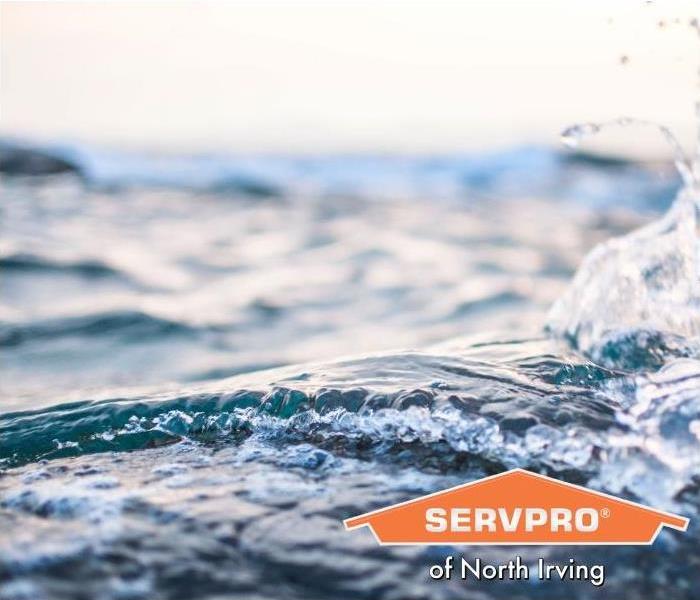Water Classification: What Can We Learn from the 3 Different Water Categories?
6/28/2021 (Permalink)
Dealing with a water-damaged home or business is no walk in the park. Water can harbor a boatload of dangerous contaminants, depending on what category of water it is. Cleaning and restoring the property quickly is a must to keep inhabitants healthy and safe.
At SERVPRO North Irving, we’ve been restoring water-damaged properties for stressed-out owners for more than 30 years. If your property has suffered a flood or leak, give us a call, and let’s get it fixed asap.
This article will cover the different water classification categories and what they mean for your damage restoration needs.
Water Damage: When to Call a Pro
With some time on their hands and previous restoration experience, ambitious property owners might think they can DIY their water damage clean-up.
But in most cases, it pays to hire a pro:
- Where’s the water source? If you have ready access to it, you can shut off the supply. But if the source of the damage is unknown, you’ll need to contact a pro. Our water damage restoration professionals are trained in uncovering hard-to-see water sources and neutralizing them.
- How much water is there? Is there more flooding than what a mop and bucket could handle? Then the flooding is too severe for simple DIY equipment.
- Is fire damage also present? If the water damage results from putting out a fire, you definitely don’t want to go to this one alone. We know how to restore both fire and water-damaged properties to pristine and safe conditions.
Bottom line:
If you can't locate the water source, the amount of water is too considerable for your mop and bucket, or there’s also fire damage present, you’ll need to hire a professional to restore your building.
Consider the Different Types of Water Classification
Finally, you’ll also need to consider the type of water category you’re dealing with.
Category 1
Category 1 water is clean water. Usually, flooding from this water source will have come from a clean pipe, sink, or faucet that broke. If cleaned quickly, you’re usually not going to deal with much, if any, bacteria. However, leaving category 1 water to sit for too long will result in mold and bacteria growth.
Category 2
Category 2 water classification is referred to as grey water. This is water from a somewhat unclean source, such as a toilet, a broken sump pump, or seepage from another grey water source. Grey water does pose a health risk to inhabitants.
Category 3
Category 3 water is black water, one of the nastiest water damage sources you’ll encounter. Category 3 black water comes from sewage or contamination of standing water. Floodwaters are considered category 3 water since they are often contaminated with raw sewage and other harmful substances.
When to Call a Professional for the Water Category you’re Dealing With
If you’re dealing with a category 2 or 3 water classification, you’ll need to contact a professional. Grey and black water are incredibly harmful to people and pets if not cleaned properly.
At SERVPRO North Irving, our water damage restoration team has the experience, knowledge, and equipment to sufficiently clean and restore property from harmful category 2 and 3 water classifications.
If you’re dealing with a flood and suspected black and grey water contamination, contact us today for a free estimate.






 24/7 Emergency Service
24/7 Emergency Service
